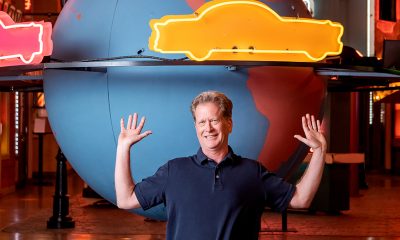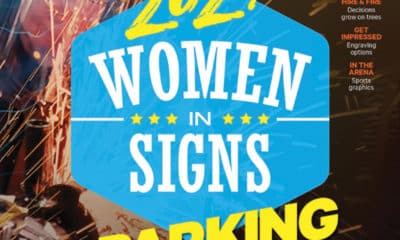Besides sports facilities, Times Square and Las Vegas, few placements of truly large, spectacular systems have occurred. Where else can one sell and install multi-million-dollar, electronic-display systems? This column focuses on a few examples of that emerging market.
LEDs are a proven commodity. Gone are the early questions regarding brightness, dependability and expected life. LED manufacturers’ newfound confidence and lower pricing have resulted in a wide array of applications previously beyond the scope of consideration.
Corporations, entertainment facilities and retail enterprises have awakened to the power of changing, high-resolution images. Any densely inhabited area provides an opportunity to reach potential viewers, many of whom represent a generation with an appetite for visual stimulation. Both indoors and out, many display opportunities exist for this new, TV-like medium, especially in the mega-display format.
Numerous new, giant systems merge off-premise advertising with an established, place-based enterprise in a shared relationship benefiting both. In Los Angeles, at the intersection of the I-105 and I-405 freeways, huge LED displays (each face is approximately 18 x 40 ft.) feature Hollywood Park Raceway promotions. These signs serve as identity and public-information displays for the raceway, while sharing space with other advertisers.
YESCO supplied the full-color LED systems; Electra-Media Inc. (Los Angeles) installed, maintains and programs them; and Alaris Corp. (Fremont, CA) marketed the system. What’s unique is this installation’s symbiotic relationship between dissimilar entities, each with a vested interest in the enormous mobile audience, but also a restricted budget.
A prime example of the LED display as pure marketing media, Lighthouse’s (Cary, NC) 63.9 x 85.2- ft. Fresh Direct display, located on New York’s Long Island Expressway, features products offered by an Internet grocery provider. This installation specifically markets products and services normally procured only online to a mobile audience. This place-based medium utilizes a non-traditional billboard format to display a continual stream of ever-changing products.
Advertisement
Daktronics Inc. (Brookings, SD) currently provides indoor LED technologies in numerous, non-traditional applications. In the new Detroit Metropolitan Airport the company has installed eight, large-format video screens that are used as televisions. Each screen is mounted to walls in the large, open gate areas and displays CNN Airport Network Broadcasting. To the best of my knowledge, these screens represent the first use of LED panels as television sets.Daktronics Inc.
Similarly, a network of 12 video boards has been installed in the new Mall of Millennia in Orlando, FL. The screens are accompanied by a speaker system to provide audiovisual entertainment.
In addition, third-party, video billboard applications continue to develop in various regions of the country. New ventures are underway in Pittsburgh, Philadelphia, Sacramento, San Francisco and Los Angeles. In each scenario, large-scale, billboard-sized screens are installed, off-premise, in a traditional billboard, land-lease arrangement for one or more clients.
Although unfavorable zoning laws limit such displays, they do exist. If appropriate zoning exists for a location with a high traffic count and clear visibility, the potential for placing an advertising display, specific to the needs of one or more clients, also exists.
The entertainment industry also embraces LED technology as a permanent backdrop for various shows. Mitsubishi has contracted to deliver a massive, 33 ft. 6 in. x 110-ft. curved face as a backdrop for the new Celine Dion show at Caesars Palace in Las Vegas. This indoor spectacular will incorporate more than 1.2 million pixels mounted at a 16mm pitch.
Likewise, large shopping complexes, which usually are geographically located to fit a certain demographic mix, as well as high traffic count, are beginning to utilize the new LED technology. Because LEDs allow for such detail, and because sign-operating systems generally provide a validation and/or billing sequence in the programming, retail manufacturers can share co-op revenue for ads shown on well-placed screens.
Advertisement
In many cases, the center itself may co-op the entire display for third-party advertising sales that facilitate the placement of such a high-cost component. The giant Southgate pylon on Los Angeles’ I-705 freeway features ads pertinent to the mall and interested third parties, including auto dealerships and television stations.
As LED systems’ costs drop this next year, many new moving-message applications will suddenly become more plausible. Examine your market. Look for those pockets where favorable zoning interpretations are possible. Also, track areas with high traffic volume. Then open your mind to the question, "Who might want to talk to that audience and why?"
Good selling.


 Projects1 week ago
Projects1 week ago
 News1 week ago
News1 week ago
 How To1 week ago
How To1 week ago
 Real Deal3 days ago
Real Deal3 days ago
 Editor's Note4 days ago
Editor's Note4 days ago
 News2 days ago
News2 days ago
 News1 week ago
News1 week ago
 Product Buying + Technology5 days ago
Product Buying + Technology5 days ago




















